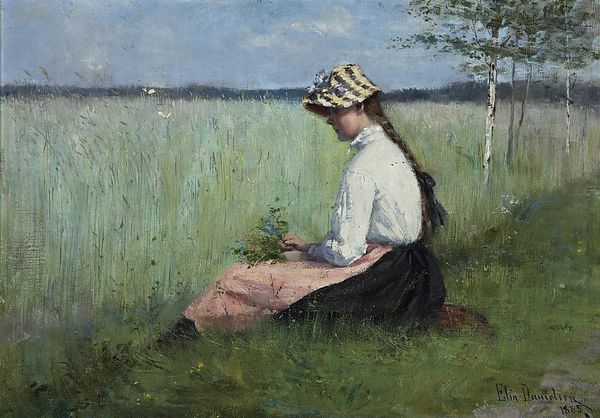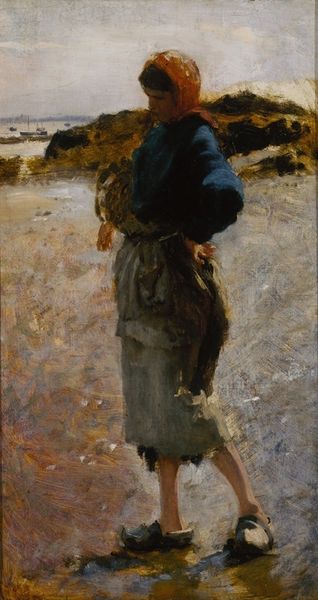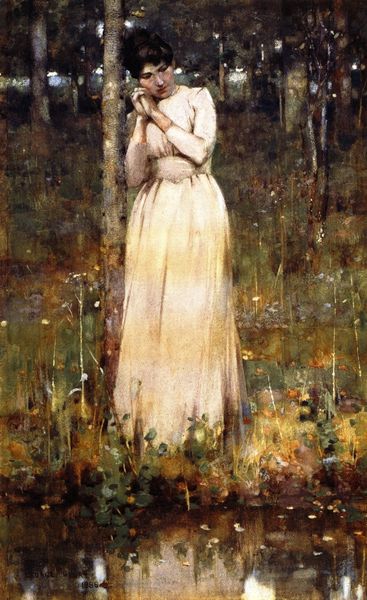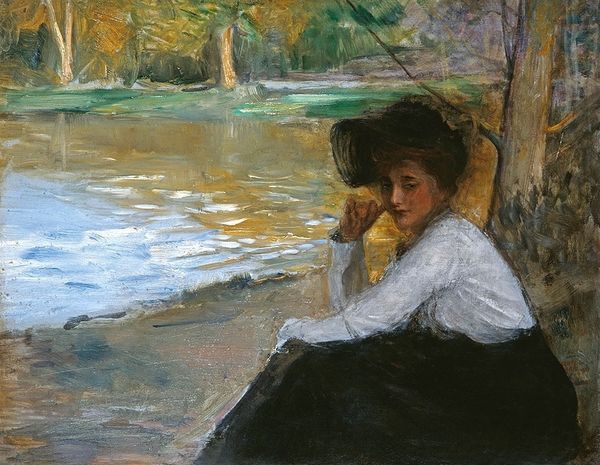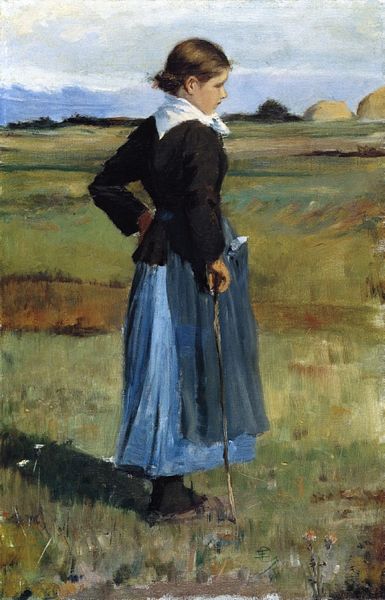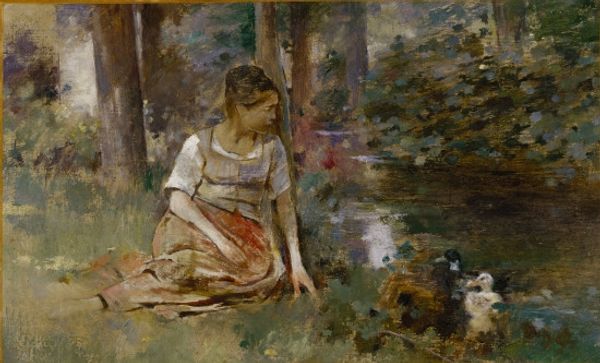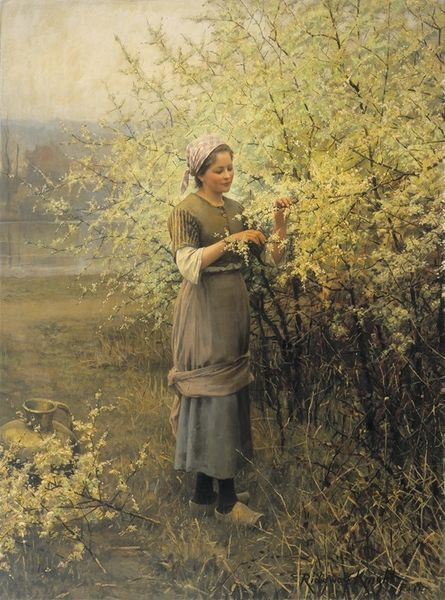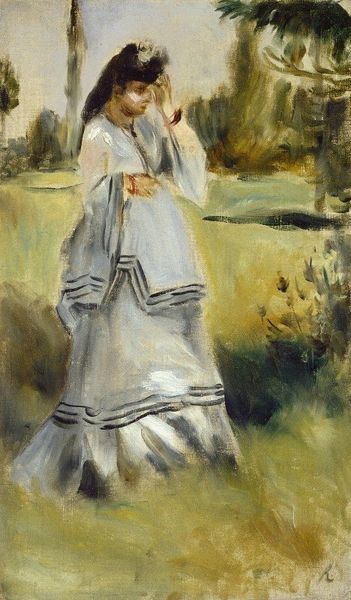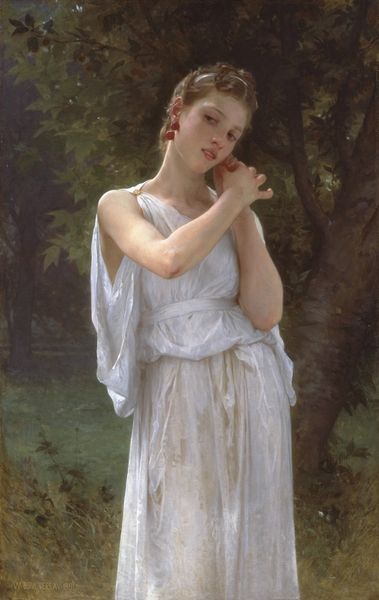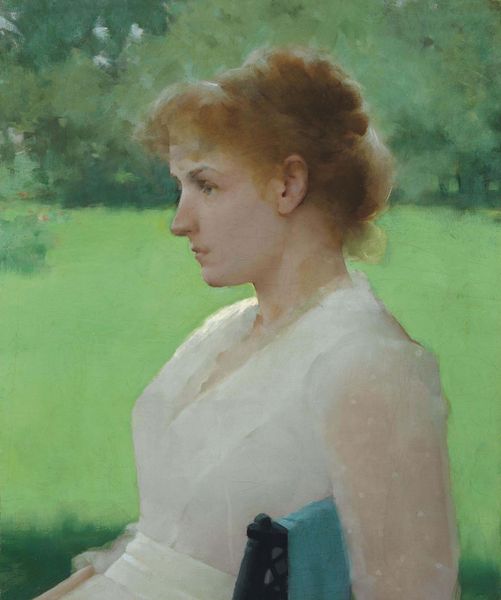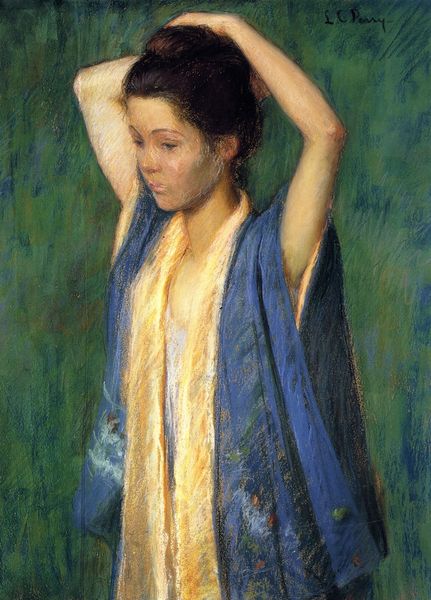
Copyright: Public domain
Here we see Theodore Robinson's painting, Angelus. With delicate brushstrokes, Robinson captures a contemplative figure amidst a serene, natural setting. The composition emphasizes the interplay of light and shadow, creating an atmospheric mood that draws us into the scene. Notice how the artist uses a subdued palette, dominated by soft blues, greens, and browns, creating a sense of tranquility. The figure's simple attire and downcast gaze suggest humility and introspection, inviting us to reflect on the human condition. But let's not forget the structural elements. The verticality of the reeds, the girl and the dark backdrop contrast with the horizontal lines of the waterlilies, creating a visual rhythm. This interplay of vertical and horizontal elements balances the composition and leads the eye through the painting. How does the painting function semantically? The muted colours and simplified forms, typical of Impressionism, serve to destabilize traditional academic painting's emphasis on detail and grandeur. This shift in artistic language can be seen as part of a broader cultural movement toward questioning established values and representations. The painting invites us to contemplate the transient and subjective nature of perception itself.
Comments
No comments
Be the first to comment and join the conversation on the ultimate creative platform.
